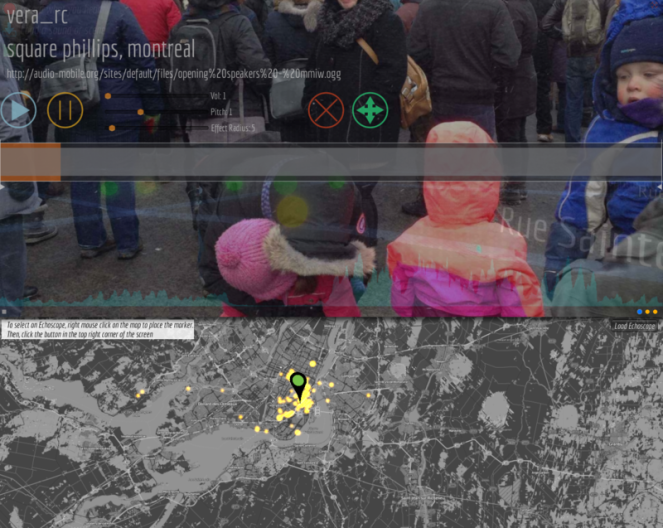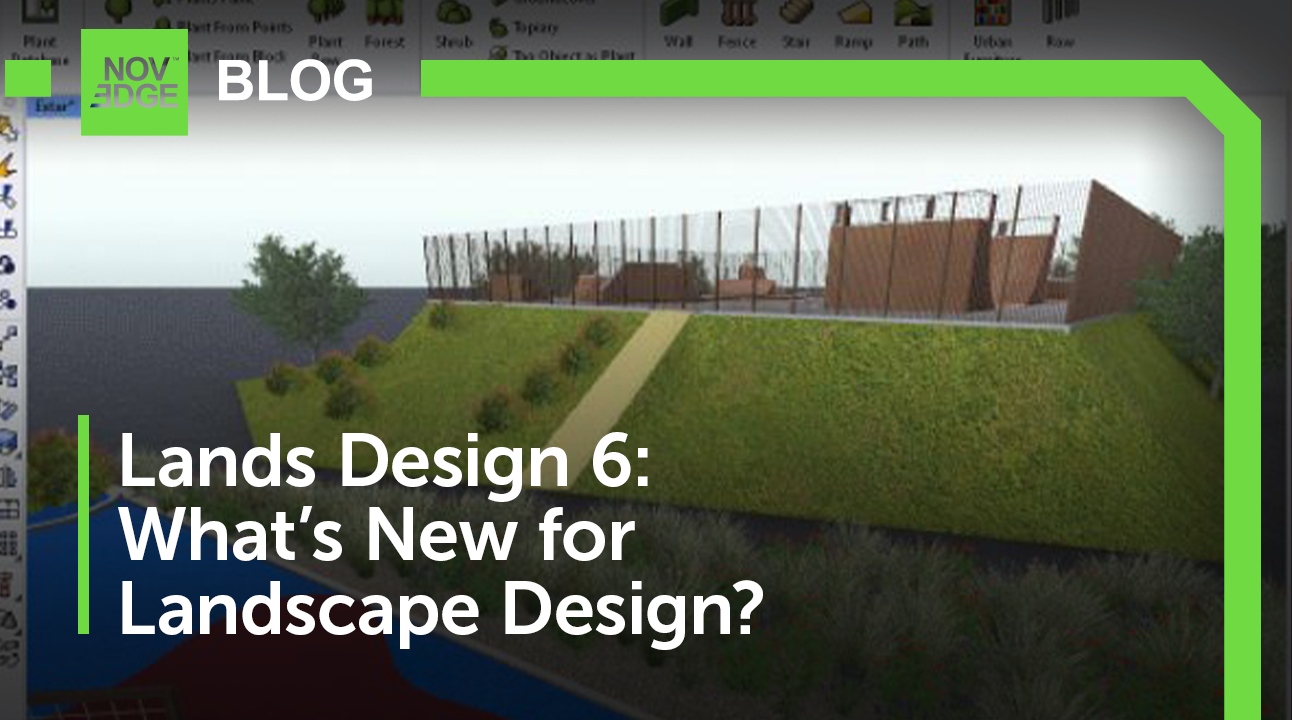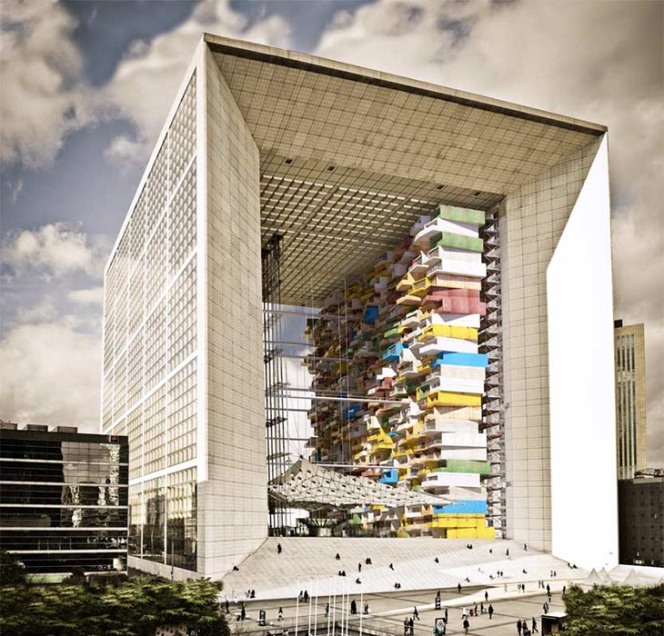Your Cart is Empty
Recent Articles
- Discover the Enhanced Features of Lands Design 6: Intuitive Interface, Rhino Plugin Integration, and Advanced Design Tools
- Efficiency Meets Innovation: SketchUp 2024 Unveiled
- Maxon One Spring 2024 Release Packs Particle Power, Toon Shading, and More
- TurboCAD 2024 Unveiled by IMSI Design: Discover the New Features and Enhancements
- Exploring the Latest InfraWorks 2025 Updates
- Introducing the Latest Innovations in Autodesk's ReCap Pro 2025
- Discover the Latest Enhancements in Civil 3D 2025
- Exploring the Newest Features and Enhancements in Revit 2025
- Explore the Latest Features in Vantage 2.3 Update
- Explore the Latest AutoCAD 2025 Enhancements: Activity Insight, Smart Blocks, and Apple Silicon Support
The Edge: Mesh, Applied Mathematics for the Digital Design Industry.
March 26, 2015 4 min read
Novedge: Tell us a little bit about yourself and what you do.  Daniel Hambleton: My name is Daniel Hambleton and I'm a mathematician by training, but I've always been interested in Design/Architecture/Gaming. My role on Design projects is often fairly flexible, but broadly speaking, I help Designers realize their projects by adjusting the 3d model, or geometry, to satisfy various constraints. These constraints can come from manufacturers, material availability, cost, scheduling, etc. Sometimes the modeling platforms themselves are the limitation – and in these situations I create new design tools geared specifically towards a project or client. The new Lassonde School of Engineering building at York University is a great example of this.
Daniel Hambleton: My name is Daniel Hambleton and I'm a mathematician by training, but I've always been interested in Design/Architecture/Gaming. My role on Design projects is often fairly flexible, but broadly speaking, I help Designers realize their projects by adjusting the 3d model, or geometry, to satisfy various constraints. These constraints can come from manufacturers, material availability, cost, scheduling, etc. Sometimes the modeling platforms themselves are the limitation – and in these situations I create new design tools geared specifically towards a project or client. The new Lassonde School of Engineering building at York University is a great example of this.  Lassonde School of Engineering.
Lassonde School of Engineering.
Meshwas hired to rationalize the facade geometry from the initial model, to a production ready one. At the start of the project, each aluminum panel was a unique shape. By the end, we had rationalized the geometry such that each panel was one of three types. This meant that overall, the 88% of the facade could be built with these three, mass produced, panel types. And in the Canadian market, this definitely helped the project to get through the various costing phases. We also handled the automatic creation of detail drawings from the 3d model, which for projects like this is an essential part of the process. If you are creating thousands of drawings entirely by hand, then you are doing it wrong!  Lassonde Panels.
Lassonde Panels.  Lassonde Panels 3d.
Lassonde Panels 3d.
In recent years, I've been doing a lot work in the serious games industry. Echoscape, for instance, is an open source projectdeveloped for the Mobile Media Lab at Concordia University that offers an interactive, 3d environment for collection and remixing of user created sounds.  Echoscape, Mobile Media lab, Montreal.
Echoscape, Mobile Media lab, Montreal.
Novedge: What does Mesh exactly offer and who are your services geared to?
Daniel Hambleton: Mesh Consultants Inc. offers an applied mathematics service to the Digital Design industry. Our team consists entirely of mathematicians (and one project manager), and our combined expertise is equal parts software development, research, and 3d modelling. For Architects, we can make sure that a given design will work with the unavoidable constraints of real projects, via a custom code, numerical simulation, or high quality 3d model. For scientists and researchers, we can implement that new algorithm or process that is being tested in an interactive 3d environment. We are also very good at research and development in an industrial setting. Often, a client will approach us with the beginnings of a product or idea, we can work with them to develop it further.
Novedge: What are you working on right now?
Daniel Hambleton: Our main project right now is with a research company called Geocosm. We're providing full support (research and development, 3d modelling, software development) for their new sandstone multiphysics simulation engine. It's a fantastic and challenging project that is pulling in knowledge and technology from many different fields (geology, physics, discrete geometry, etc). For instance, here is a video showing an algorithm we've prototyped (using Rhino and Grasshopper) that evolves any triangular mesh towards a more archetypical "crystalline" shape.
That is, one whose facets line up with an underlying crystal structure. We're also really excited about or in house project RhinoPhysX, which is an implementation of Nvidia's popular PhysX engine for Rhino3D. It's still in it's infancy, but there is stable release available for testing.Novedge: What is the latest in digital technology?
Daniel Hambleton: There is so much happening every day. For instance, over the last week, Unity, Unreal, and PhysX have all announced a commitment to becoming more open source. I'm a big fan of the open source initiatives, and for major players like this to join the cause is amazing. I've also been seeing a new generation of 3d modelling apps (Onshape, for instance), that look like they might actually be production worthy. This is pretty incredible since it very hard to develop a stable 3d modelling app (partly why there are so few battle tested alternatives). Of course, the recent VR excitement is very interesting (Oculus, Valve, Microsoft). For digital professionals, I think Microsoft's HoloLens looks the most promising.
Novedge: Now more than ever there's a big interaction between Mathematics, Engineering and Architecture. As Snohetta's pricipal Craig Dykers said on an interviewwith Novedge" I can only hope that Architecture as we know it, will simply fade away. I am hopeful that we will instead find ourselves working within more complex and interconnected systems." Do you agree with that?
Daniel Hambleton: Well, it's hard to agree or disagree with someone's hopes  While I don't think that Architecture as we know it will fade away (i.e. a knowledge of proportions, materials, and cultural theory is critical to designing good buildings), I do agree that the tools, or systems, that create this Architecture will continue to become more feature-rich and more interconnected. I don't like using the word "complex" in this context, since what is seemingly complex for one person can be quite straightforward for another – rather I think we should look at our systems in terms of what they can do, how many features the have. If I were to hazard a guess at where the industry is moving to, from a technology point of view, I think it is actually the dedicated CAD applications that will fade away. Instead, the process of designing a building and designing the software to deliver that building will merge. This process has actually already begun. Most high end Architecture firms employ a handful of developers that interact with the API's of platforms like Rhino to do things that can't be done with the Rhino interface. But why limit yourself to one API? Why not combine the Revit API and the RhinoAPI directly (licensing restrictions aside!)? I think the natural extension of this trend is a unified delivery pipeline for both the hardware (i.e. the building) and software.
While I don't think that Architecture as we know it will fade away (i.e. a knowledge of proportions, materials, and cultural theory is critical to designing good buildings), I do agree that the tools, or systems, that create this Architecture will continue to become more feature-rich and more interconnected. I don't like using the word "complex" in this context, since what is seemingly complex for one person can be quite straightforward for another – rather I think we should look at our systems in terms of what they can do, how many features the have. If I were to hazard a guess at where the industry is moving to, from a technology point of view, I think it is actually the dedicated CAD applications that will fade away. Instead, the process of designing a building and designing the software to deliver that building will merge. This process has actually already begun. Most high end Architecture firms employ a handful of developers that interact with the API's of platforms like Rhino to do things that can't be done with the Rhino interface. But why limit yourself to one API? Why not combine the Revit API and the RhinoAPI directly (licensing restrictions aside!)? I think the natural extension of this trend is a unified delivery pipeline for both the hardware (i.e. the building) and software.
I you want to keep up with the New Research and Technology for the Digital Design Industry, check out Mesh's own website and follow them on Twitter.
If you want to keep up with the latest Software News and groundbreaking Blog interviews, visit our Facebook, Twitter and Google Plus account.
Related articles
Also in NOVEDGE Blog

Discover the Enhanced Features of Lands Design 6: Intuitive Interface, Rhino Plugin Integration, and Advanced Design Tools
April 30, 2024 3 min read
Read More
Maxon One Spring 2024 Release Packs Particle Power, Toon Shading, and More
April 10, 2024 4 min read
Read MoreSubscribe
Sign up to get the latest on sales, new releases and more …






